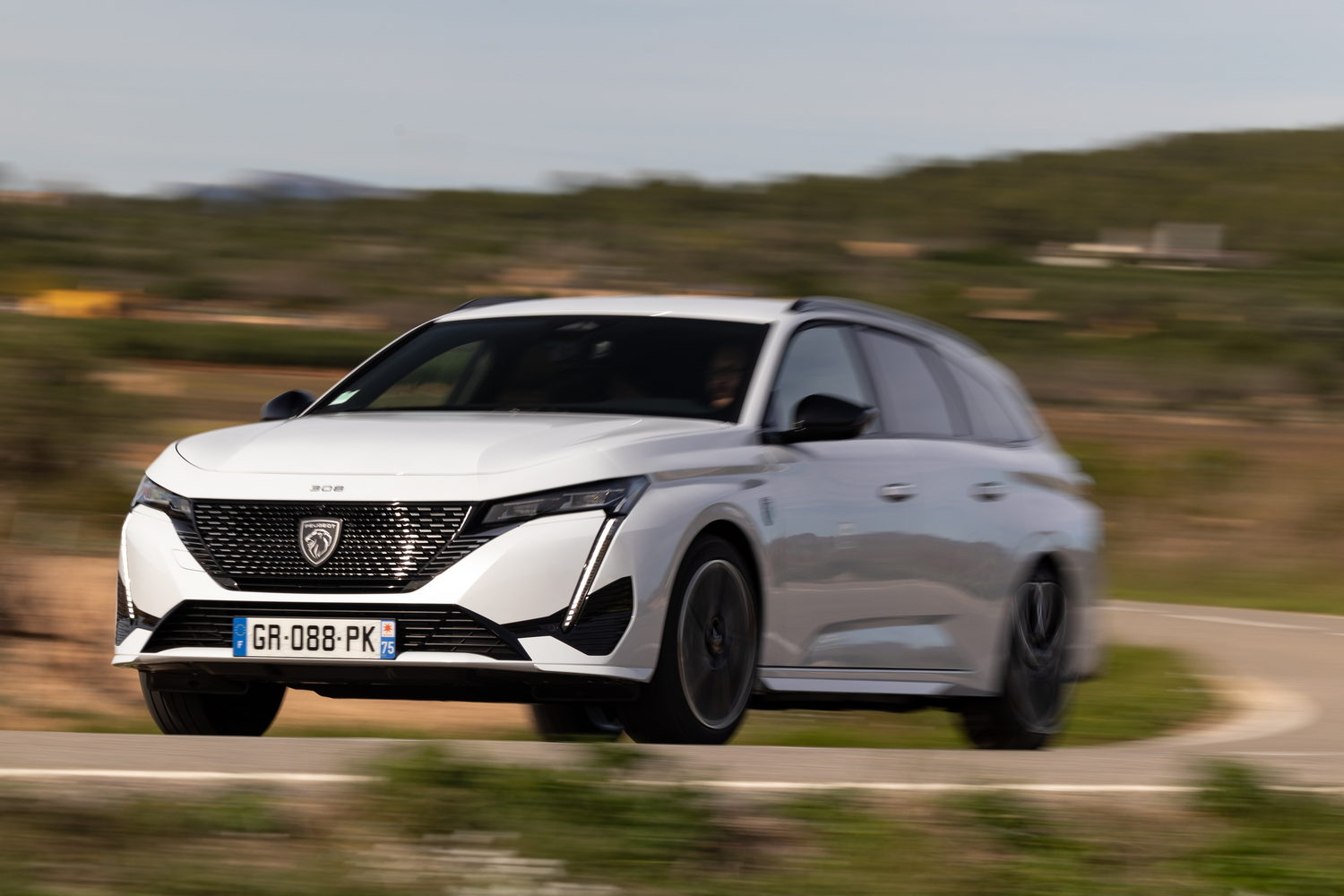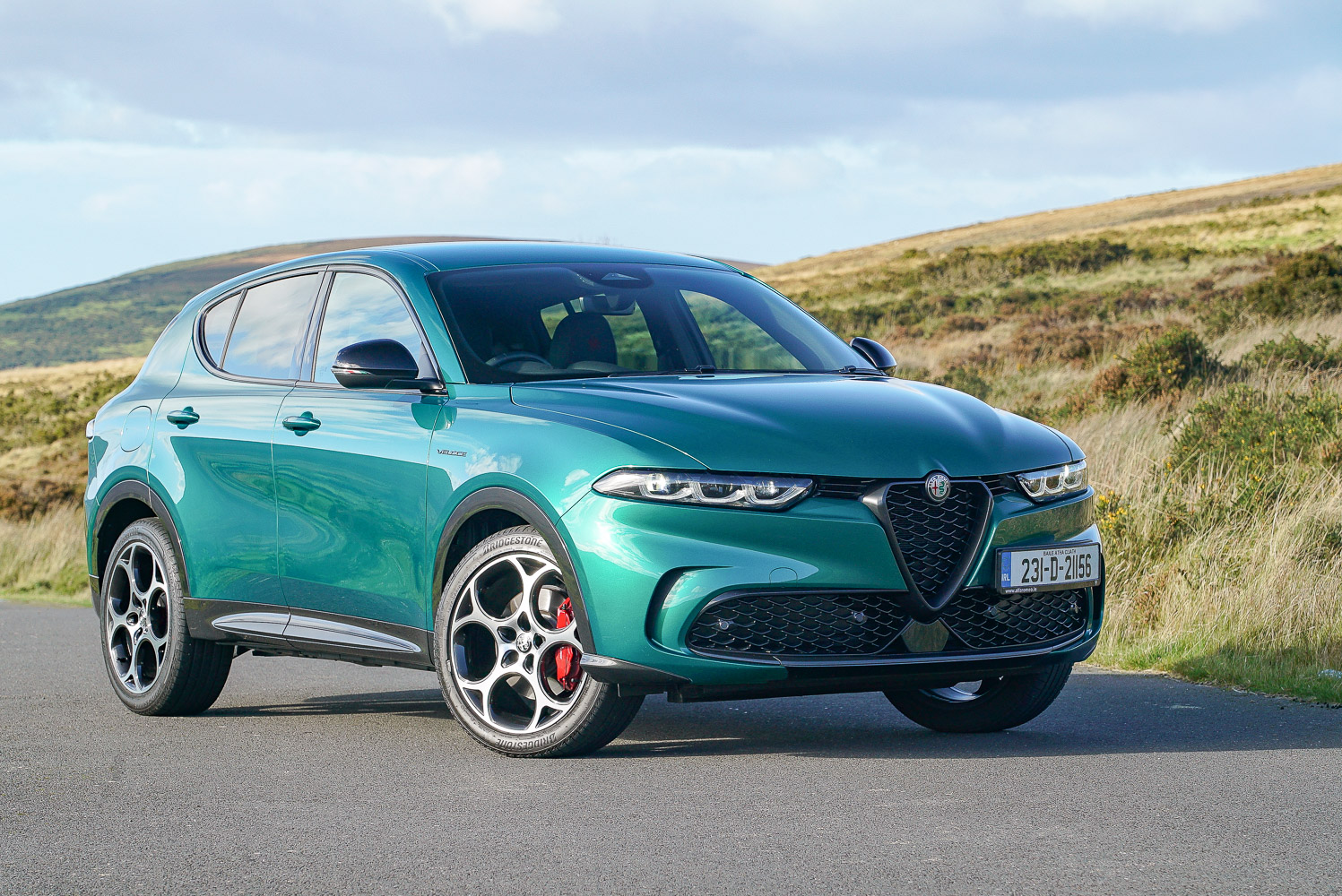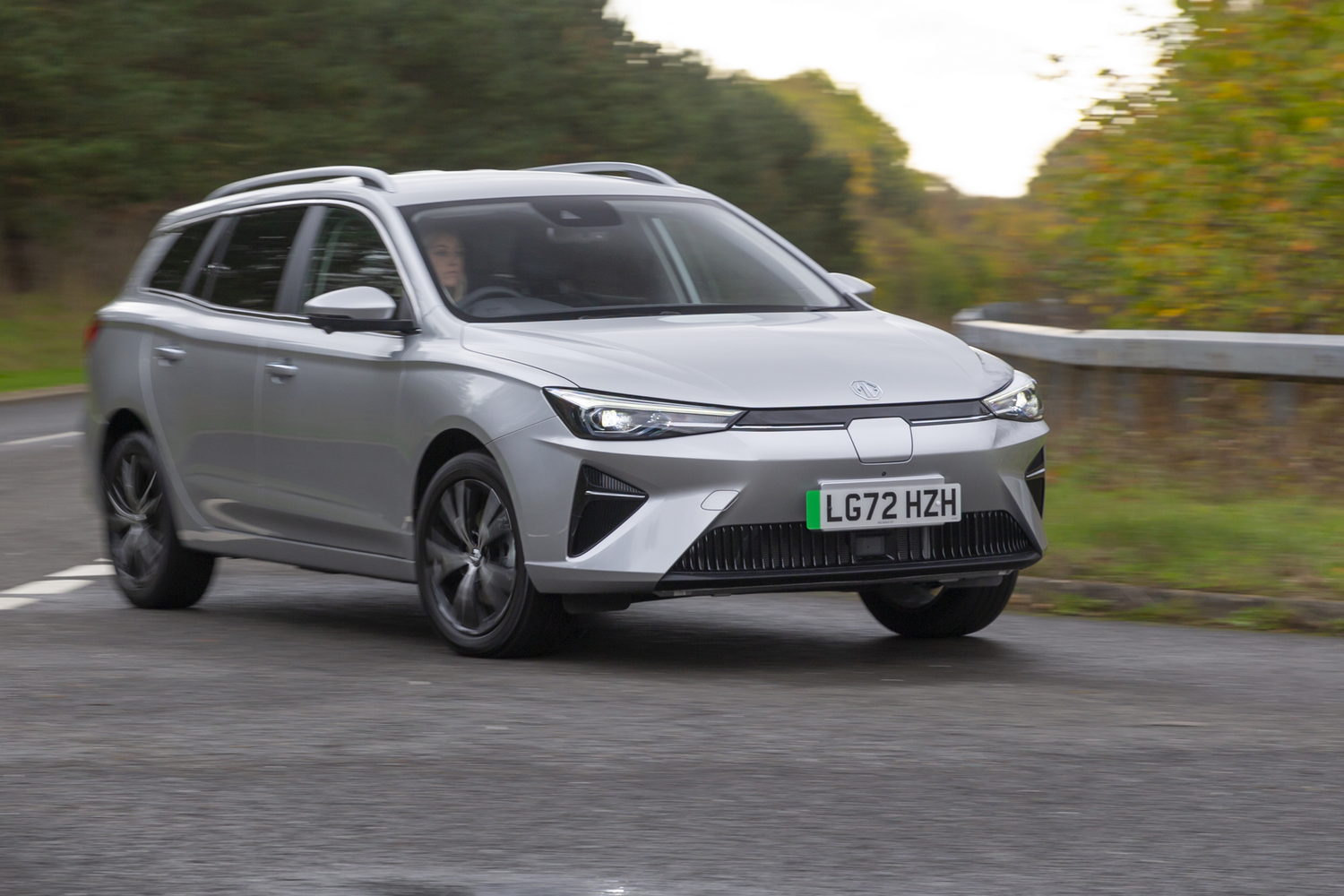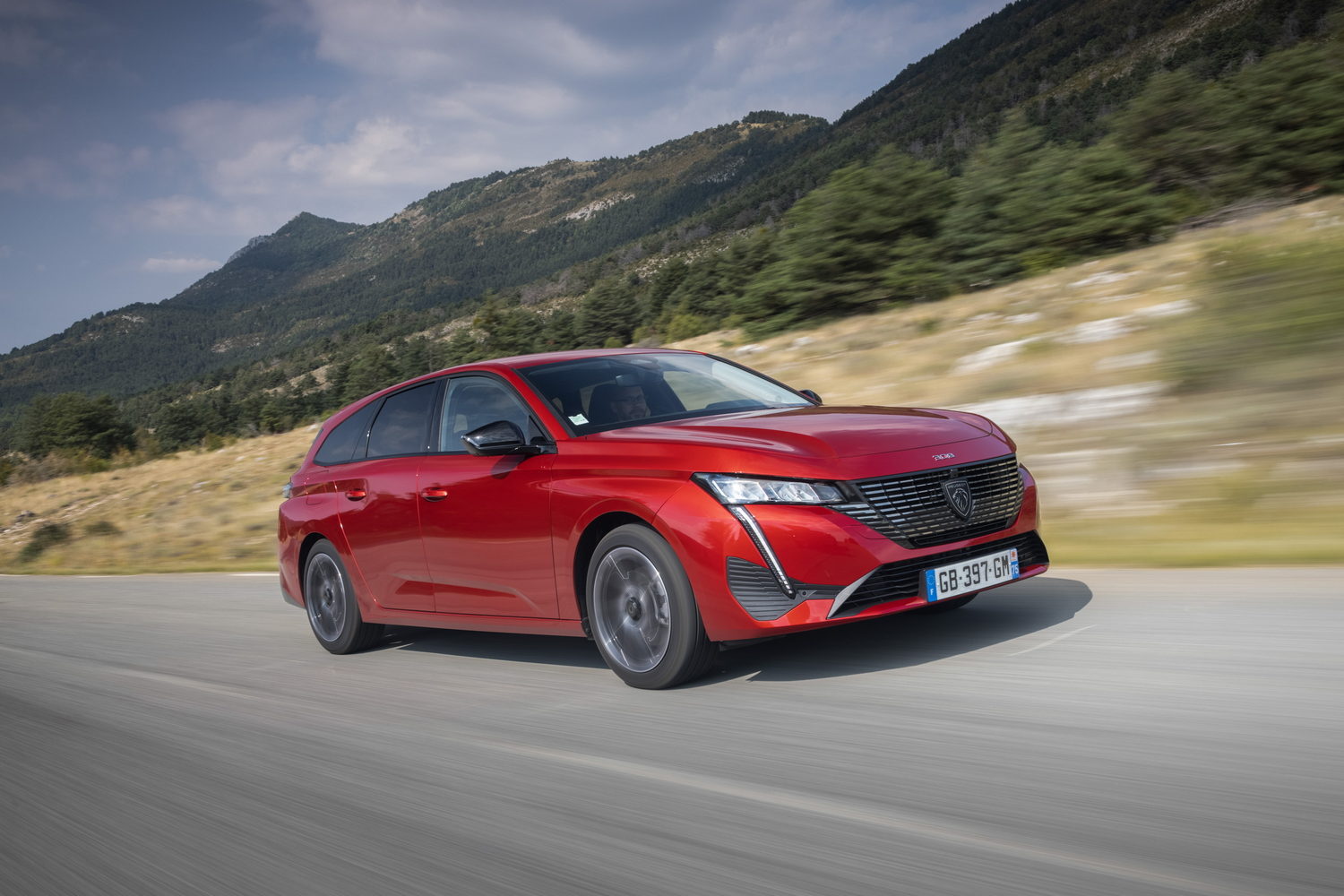Until now, the electric estate car market has been limited to the MG5 and the Porsche Taycan, although whether those two can really be considered competitor products is, at best, open to debate. But Peugeot is about to change all that with the arrival of the new E-308 SW. Essentially an elongated version of the E-308 hatchback we tested not long ago, it promises much, but will it be good enough to prevent the value-orientated MG from having things all its own way?
In the metal
From the outset, the Peugeot E-308 SW was designed to look much like its petrol, diesel and hybrid siblings. In fact, so desperate were the designers to prevent the electric model from looking other-worldly that the only differences are some E badges on the tailgate and an E-308-specific set of 18-inch alloy wheels. Apparently, they're more aerodynamic than those fitted to the standard car.
Not that we're complaining about the way the 308 looks, be that in hatchback or estate forms. Peugeot's design team has been on a roll ever since the 508 was revealed back in 2018, and it shows no signs of stopping. The 308 has to be one of the best-looking family hatchbacks you can buy, and the SW version wears its extra length, bulk and space very well indeed. In fact, from some angles, we think it's even easier on the eye than the hatchback.
From the driver's seat, it feels much the same as the hatchback. As with the exterior, Peugeot has endeavoured to keep things much the same in the cabin, so you get the same basic view, dominated by the tiny steering wheel and high-set instrument display, as well as a central touchscreen.
Peugeot is still pushing on with the small steering wheels to allow the high-set instruments to be seen above the top of the rim. However, depending on your size and shape, it can impact on your driving position. Push the wheel down too far and you may not be able to fit your knees underneath, but push it up too far and you may not be able to see the bottom part of the instrument display.
The central touchscreen arrangement, on the other hand, is somewhat more successful. Yes, some of the menus are confusing and it isn't always easy to find what you're after, but it could be an awful lot worse. At least the resolution is sharp, and the secondary lower screen, with the configurable 'I-Toggle' shortcuts, is a really neat way of accessing the menus you use most in an expeditious fashion. We'd still like to see some proper climate control switchgear.
Then there's the question of quality. Except it isn't really a question, because the 308 - and by extension, the E-308 SW - is much better built than you might expect. French companies aren't known for their cabin solidity, but the 308 uses some smart materials.
Practicality is key for the SW estate, and it delivers. Because the E-308 is so similar to its petrol-, diesel- and hybrid-powered siblings, even the amount of space on offer is comparable. The 308 and its SW sibling have never been especially generous in the rear cabin space department, although the SW is more spacious than the hatchback. And it's the same story in the E-308, where headroom is ample and legroom is just about adequate, although the tallest passengers won't want to sit behind a similarly tall driver. Even so, fitting four adults in there is perfectly feasible.
Boot space, on the other hand, is much more competitive. Because of the batteries and electronics, the E-308 SW shares luggage compartment dimensions with the plug-in hybrid variant. That means you miss out on the 608-litre load space of the petrol and diesel models, but you still get a perfectly respectable 548 litres of carrying capacity - more than you'll get in an MG5. And that's just with the rear seats in place. Fold them down and you'll free up 1,574 litres.
Driving it
Unsurprisingly, the E-308 SW doesn't feel so different from the hatchback when you get it on the road, either. That's partly because the powertrain is identical - a 51kWh battery (that's the usable energy capacity) feeds a 115kW electric motor that drives the front wheels - and partly because the two cars have very similar ride and handling characteristics.
But let's start with the powertrain, which produces up to 156hp and offers reasonable performance. Officially, 0-100km/h takes just under 10 seconds, which is sufficient for keeping up with traffic. Sport mode unleashes the car's full might and makes the accelerator response a bit perkier, but it never feels particularly quick.
More important, however, is efficiency, and the E-308 SW is unsurprisingly less efficient than its hatchback-shaped sister. That said, it's only a fraction less efficient, covering between 392- and 409km on a single charge. With the E-308 hatch managing 410-413km, the difference is pretty minimal. In the real world, of course, neither car is especially likely to top 400km on a single charge, but the advantage is you won't really notice a range penalty for choosing the SW under most circumstances.
There is no penalty in terms of charging, either, and when the battery runs flat, E-308 SW owners can take advantage of the same 100kW charging capacity as the hatchback. At maximum charging speed, and under optimal conditions, the Peugeot's battery will be topped up from 20 per cent to 80 per cent in well under half an hour.
Back on the road, the E-308 is quite smooth and refined, without too much road noise and very little motor noise, as you would expect from an electric family car. Both the hatchback and estate are also quite enjoyable to drive. Slightly more substantial-feeling steering and the distribution of weight down in the car's bowels means the E-308 models have a marginally sportier feel than the other versions, despite the additional weight. They're no more agile, of course, but they're very agreeable cars to drive about in. And though the on-paper performance looks unremarkable, the lack of gear ratios means the E-308 feels quick on the uptake, which is useful around town.
The SW version manages its extra length and bulk well, with no immediately obvious difference in body lean through corners or steering feel. It's a very well managed conversion from hatchback to estate, and it comes with a bonus (albeit a small one) other than additional practicality. That bonus is a subtle change in the way the SW version rides. On smooth continental roads - and, we suspect, on more scarred surfaces back home - it's barely discernible, but the E-308 estate's slightly longer wheelbase gives it a marginally more comfortable gait, allowing it to soak up imperfections with a fraction more composure. It isn't a transformational difference, but it is very moderately more absorbent.
What you get for your money
Peugeot Ireland hasn't yet announced prices for the E-308 SW, or indeed for the E-308 hatchback, but we'll update this section when we know more.
Summary
While it's true the Peugeot E-308 SW is basically just an E-308 with a bigger boot, it shouldn't be dismissed as a niche player. Yes, it's more expensive than an MG5, but the Peugeot is just as spacious and much better looking, as well as being better to drive. Sure, it'll be more expensive than the hatchback and the range is fractionally shorter, but those are very small prices to pay for picking the SW over the conventional car. And in return, you get much more carrying capacity and, in our eyes, a marginally more attractive overall package.































